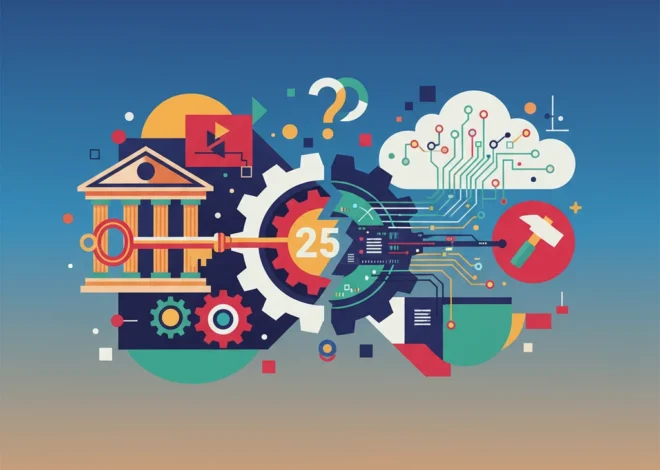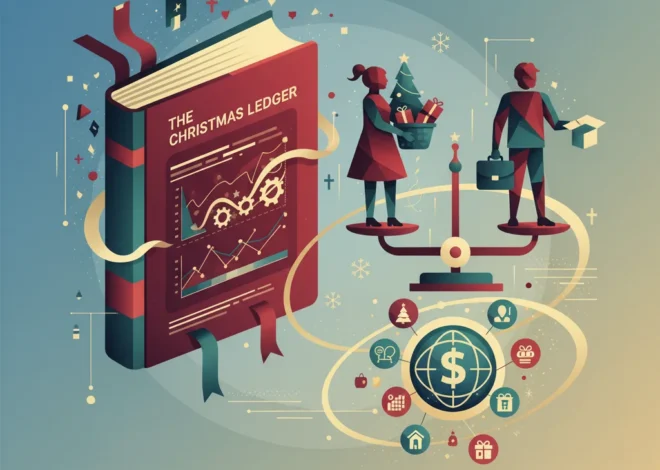
The Manual vs. Automatic Dilemma: What Your Driving Choice Reveals About Modern Investing and the Economy
In an era dominated by automation and a relentless drive for convenience, a curious trend is emerging on the roads of the UK. While automatic cars increasingly populate our streets, a significant number of learner drivers are being pushed—not by choice, but by circumstance—to master the complexities of a manual gearbox. A recent report from the BBC highlights that a scarcity of automatic driving instructors and the higher cost of their lessons are forcing learners to opt for manual vehicles. This seemingly simple consumer decision is more than just a footnote in automotive news; it’s a powerful and revealing metaphor for one of the most significant debates in modern finance, investing, and business strategy: the ongoing battle between manual control and automated efficiency.
The choice between depressing a clutch and shifting gears versus simply putting a car in “Drive” mirrors the strategic dilemmas faced by investors in the stock market, executives navigating the digital economy, and innovators disrupting traditional banking. Are we better off with our hands firmly on the wheel, making active, discretionary decisions? Or should we trust sophisticated, automated systems to guide us more efficiently toward our destination? This article delves into this analogy, exploring how the frictions in the driver education market reflect the larger challenges and opportunities shaping our financial future.
The Learner’s Crossroads: A Microcosm of Economic Forces
At first glance, the preference for an automatic vehicle seems obvious. It’s easier to learn, less stressful in heavy traffic, and aligns with the direction of the automotive industry, particularly with the rise of electric vehicles which are exclusively automatic. Yet, the reality on the ground is dictated by classic economic principles: supply and demand. According to the BBC’s findings, aspiring drivers face a market where the supply of automatic instructors hasn’t kept pace with demand, leading to inflated prices and long waiting lists. Consequently, many are “forced” into learning manual as the more accessible and economical option.
This situation presents a clear trade-off, forcing a decision based not on preference, but on market constraints. Let’s break down the core factors at play.
| Decision Factor | Manual Transmission | Automatic Transmission |
|---|---|---|
| Skill & Control | Requires higher initial skill (clutch control, gear timing). Offers more granular control over the vehicle’s power and performance. | Lower learning curve. The system manages gear changes, allowing the driver to focus more on steering and road awareness. |
| Cost & Accessibility (Learning) | Lessons are generally cheaper and instructors are more widely available, as per the BBC report. | Lessons are often more expensive due to higher demand and lower supply of specialized instructors and vehicles. |
| Long-Term Versatility | A manual license permits the holder to drive both manual and automatic vehicles, offering maximum flexibility. | An automatic license restricts the holder to driving only automatic vehicles, limiting future options. |
| Market Trend Alignment | Represents a legacy technology, though still prevalent in many parts of the world and among enthusiasts. | Represents the future of personal transport, especially with the EV revolution. |
This table doesn’t just outline a choice for learner drivers; it provides a perfect framework for understanding a far larger debate in the world of investing: the persistent rivalry between active and passive management.
North American Trade Shift: Why New US Tariff Relief on Trucks is a Major Signal for Investors
The Investor’s Gearbox: Active Management vs. Passive Automation
For decades, the financial world has been split into two camps, each championing a different philosophy for navigating the complexities of the stock market.
Manual Driving as Active Investing: Learning to drive a manual car is analogous to active investment management. The active investor, like the manual driver, believes that through superior skill, timing, and direct control, they can outperform the market. They are constantly analyzing data, making tactical shifts (buying and selling stocks), and adjusting their strategy based on road conditions (market volatility). This approach requires significant expertise, continuous attention, and the conviction that one’s own judgment can beat the average. Proponents argue that in certain market conditions—like a sharp downturn—an expert “driver” can navigate the challenges more nimbly than a rigid, automated system.
Automatic Driving as Passive Investing: The automatic car is the perfect symbol for passive investment strategies, such as buying and holding low-cost index funds or ETFs. The passive investor makes a high-level decision (choosing the destination, i.e., the index to track) and then lets the vehicle do the work. The system automatically handles the “gear changes” by tracking the market’s performance without attempting to outsmart it. This approach, championed by figures like Vanguard’s John Bogle, is built on the principles of simplicity, low cost, and the acknowledgment that consistently beating the market is exceedingly difficult. Data frequently supports this view; a report from S&P Dow Jones Indices consistently shows that a vast majority of active fund managers fail to outperform their benchmark indices over the long term.
Just as learners are pushed to manual by cost, many new investors are pushed towards complex, active trading platforms by the allure of high returns and the gamified nature of modern apps, despite the data suggesting a passive approach is often more prudent. They are choosing the more difficult, hands-on method, sometimes without fully understanding the simpler, more automated alternative.
From Fintech to Blockchain: The Economy’s Shift to Automatic
This “manual vs. automatic” paradigm extends far beyond personal investing and into the very architecture of our modern economy. The rise of financial technology, or fintech, is fundamentally a story of replacing manual, cumbersome processes with sleek, automated solutions.
Consider the world of banking. Traditional banks have historically operated on a “manual” model, requiring in-person visits, paper forms, and human tellers for many transactions. Fintech challengers, or neobanks, are built on an “automatic” chassis. They offer seamless digital onboarding, automated savings tools, and AI-powered customer service, stripping out the friction and cost of the old model. This shift is forcing the entire industry to upgrade its transmission.
Nowhere is this push for automation more profound than with the advent of blockchain technology. If traditional finance is a complex manual gearbox requiring numerous trusted intermediaries (banks, clearinghouses, lawyers) to shift assets from one party to another, blockchain is its automatic counterpart. It is a decentralized, automated ledger that executes and settles transactions according to pre-defined rules (smart contracts) without the need for manual oversight from a central authority. It’s a system designed to automate trust itself, promising a future of finance with fewer “missed shifts” and a smoother ride for the entire global economy.
The following table illustrates this broader economic shift, using our driving analogy as a guide.
| Economic Sector | “Manual” Approach (Legacy) | “Automatic” Approach (Modern/Disruptive) |
|---|---|---|
| Investing | Active stock picking by human fund managers. | Passive index funds, ETFs, and robo-advisors. |
| Trading | Human traders on a stock exchange floor making discretionary decisions. | High-Frequency Trading (HFT) algorithms executing millions of trades per second. |
| Banking | Brick-and-mortar branches, manual loan underwriting, paper-based processes. | Fintech apps, AI-driven credit scoring, automated digital payments. |
| Contracts & Law | Manually drafted legal agreements requiring lawyers and notaries for execution. | Blockchain-based smart contracts that self-execute when conditions are met. |
Market Frictions: When External Forces Dictate Strategy
Let us return to our stranded learner driver, forced to learn manual because of a lack of automatic instructors. This is the crux of the issue: often, the choice between a manual or automated strategy is not made freely. It is dictated by external constraints, or “market frictions.”
In the world of economics and finance, these frictions are everywhere. A business may want to adopt a cutting-edge, automated inventory system (the “automatic” choice) but is constrained by the high upfront implementation cost and a lack of skilled technicians (the “instructors”). An investor might prefer a simple, passive portfolio but is swayed by a commission-based financial advisor towards complex, actively managed products. Legacy regulations, like a patchwork of international crypto laws, can slow the adoption of more efficient blockchain-based systems, keeping the industry in a “manual” gear for longer than necessary.
Understanding these frictions is critical for investors and business leaders. It’s not enough to identify the superior strategy in a vacuum; one must also account for the real-world barriers to its implementation. The “best” choice on paper is irrelevant if it’s inaccessible, unaffordable, or poorly understood.
Déjà Vu or a Different Devil? Unpacking the New Wave of US Banking Jitters
Conclusion: Navigating the Road Ahead
The seemingly mundane choice facing a learner driver—between a clutch pedal and a simple “D” for drive—serves as an unexpectedly insightful allegory for the transformations sweeping through our economy. The tension between manual control and automated efficiency is a defining feature of our time, shaping everything from personal finance to global trading and financial technology.
The lesson from the driving school is not that one choice is inherently superior to the other. A manual license, after all, offers ultimate flexibility. The real insight is that external market forces—cost, access, and availability—often dictate our strategic path more than pure preference does. As technology continues its relentless march, the “automatic” options in finance and business will become more sophisticated, accessible, and dominant.
However, the value of “manual” skill—human judgment, strategic oversight, and the ability to navigate unprecedented situations—will not disappear. The most successful leaders, investors, and professionals of the future will be those who are fully licensed to operate both. They will be the ones who appreciate the power and efficiency of automation but possess the wisdom and expertise to know when to override the system and take direct, manual control of the wheel.


